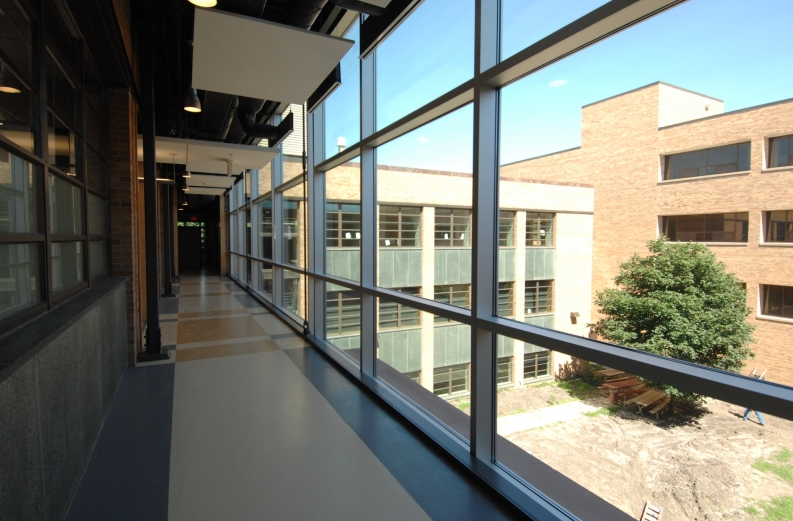
The Big Red Green Team in the Institute of Agriculture and Natural Resources is getting greener.
The renovation of Keim Hall is on track to receive LEED certification from the U.S. Green Building Council. UNL's Department of Agronomy and Horticulture and colleagues in grassland studies, Nebraska Forest Service and the USDA will move into the renovated hall this month.
LEED (Leadership in Energy and Environmental Design) was developed by the U.S. Green Building Council to provide a framework for identifying and implementing practical, measurable "green buildings." The Keim Hall renovation is expected to earn a silver or gold LEED rating. The LEED rating system offers three levels of green building -- silver, gold and platinum.
The LEED designation means the building is designed and built "to improve energy savings, water efficiency, sustainability, improved indoor environmental quality, and stewardship of resources and sensitivity to their impacts," said Barry Shull, IANR facilities director.
Built in 1950, Keim needed substantial renovation, said Mark Lagrimini, head of agronomy and horticulture.
Windows leaked, there were heating and cooling problems, and some laboratories no longer were suitable for the equipment scientists need to conduct research and teach students today, Lagrimini said. The renovation included installation of a sprinkler system, asbestos abatement and addressing all deferred maintenance problems.
"They completely gutted the building," Lagrimini said. "Only the shell remained. From the outside they retained the classic architecture of the building. Inside it's fully redesigned."
The renovation added usable space inside the building by moving the center corridor that originally ran through the building's wings to an outer wall, Lagrimini said. Adding a penthouse to the roof to house heating and cooling equipment also freed building space.
"We used as many natural materials as we could so the building itself is a classroom for our students," Lagrimini said. "The carpet is made from a corn-based fiber. Panels are made from wheat straw. Rainwater runoff is captured to minimize what goes into the storm sewer system."
That captured rainwater will water plants around the building and help supply the new pond and waterfall added to the building's center courtyard, Lagrimini said.
Shull provided further examples of what Keim Hall's green status means:
- The building's energy performance will be 18 percent better than a baseline standard building.
- Water usage will be 48 percent better than code requirements, achieved by use of water-conserving toilets, urinals and faucets.
- A Construction Waste Management program diverted 81 percent of the renovation construction waste - scrap metal, concrete rubble, wood, cardboard - away from the landfill to be recycled.
- 20 percent of material used had recycled content because project architects Alley Poyner Macchietto of Omaha incorporated recycled materials into the design.
- 14 percent of the materials used were extracted and manufactured within 500 miles of Lincoln. Regional material was specified where possible to increase demand for building materials and products extracted and manufactured within the region, supporting the use of native resources and reducing the environmental impacts of transportation.
- Low-volatile organic compound emitting materials reduce the quantity of indoor air contaminants.
Keim Hall will be rededicated at 2 p.m. Sept. 17 as part of the Department of Agronomy and Horticulture's centennial celebration. Public tours and lectures will be offered on Sept. 18.
The $14 million renovation is an LB605 Deferred Maintenance project. LB605 was passed in 2006 as an investment that protects Nebraska's capital assets and offers a proven return to Nebraska in terms of economic development and improved ability to recruit and retain students and faculty, said John Owens, recently retired IANR Harlan vice chancellor.
"Sustainability is an important part of what we teach our students," Owens said, "and the 'greening' of our home for scientists, staff and students working in and studying agronomy and horticulture seems particularly fitting. We thank the Nebraska Legislature for their vision and support in meeting the needs and helping grow a successful future for Nebraska."
- By Judy Nelson, IANR
More details at: http://go.unl.edu/rnn